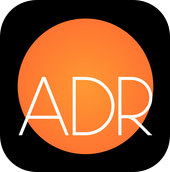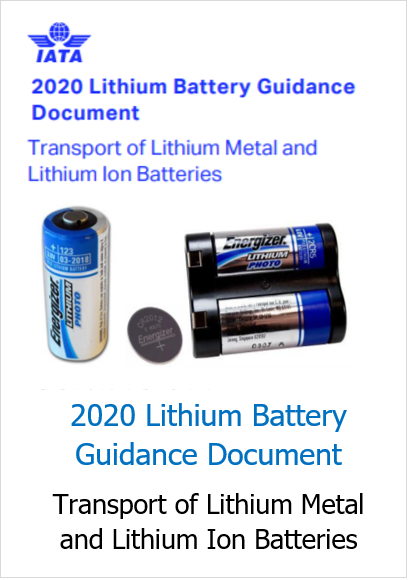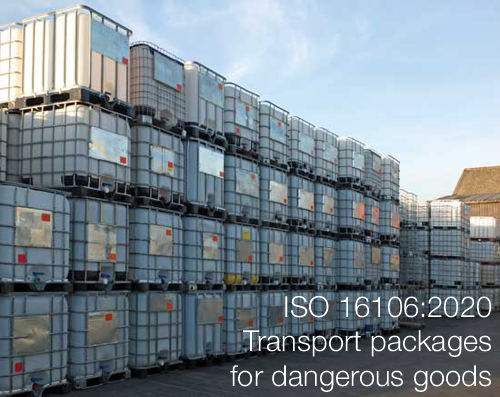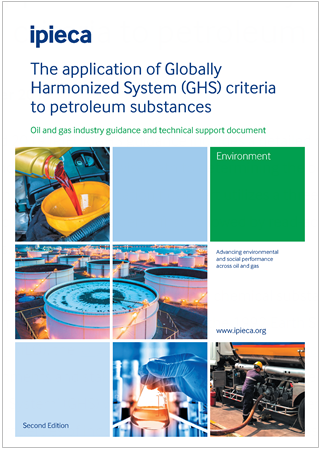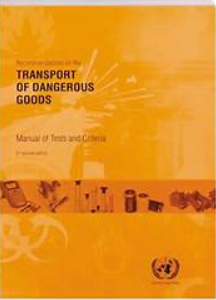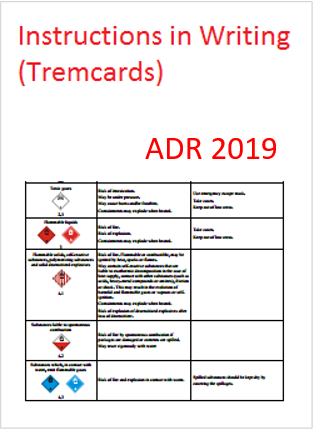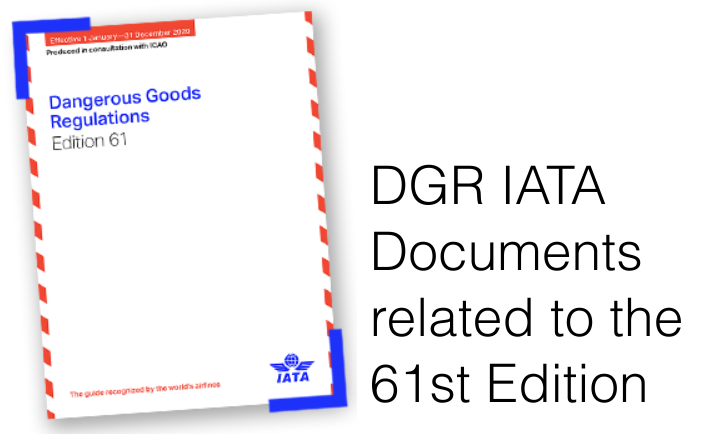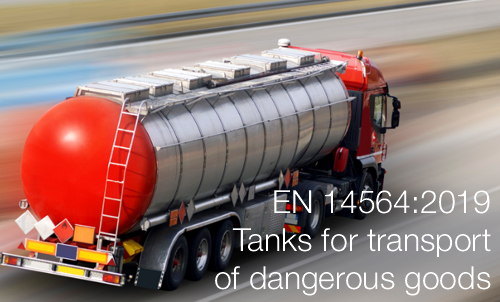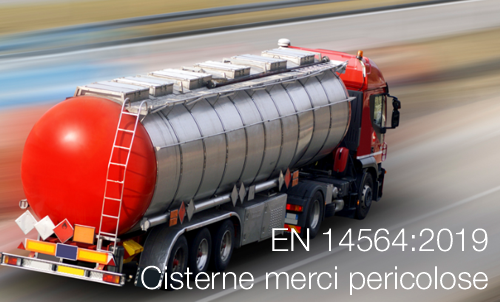Safety ADR / Dangerous Goods App
Safety ADR© is an app for the transport of ADR dangerous goods which allows you to:
– view the entire Table A chap. 3.2 ADR per ONU/denominazione/classe/altro* (Italiano, Inglese);
– fill in the "Subject Report" for each ADR subject with the "Safety" parameter (1) (Italiano, Inglese);
– fill in the "Tremcards P" for each ADR subject.0” (2) (Italiano, Inglese);
– consult the Written Instructions according to the ADR (Inglese, Italiano, Francese, Russo, Danese, Lettone, Norvegese, Svedese, Tedesco, Ungherese, Romeno, Portoghese, Ceco, Spagnolo, Turco, Sloveno, Slovacco, Estone, Neerlandese (Belgio), Neerlandese (Paesi Bassi), Polacco, Finlandese, Lituano, Bulgaro, Greco, Serbo);
– have real-time news displayed directly on Home;
– consult the ADR agreement (Inglese, Francese);
– consult the ADR labels, le classi, i Kemler (Italiano, Inglese).
COVID-19 and ADR: news 04.04.2020
COVID-19 and ADR: news 04.04.2020
In light of the current situation related to the coronavirus (COVID-19), some ADR contracting parties coordinated their efforts to prepare a multilateral agreement to compensate for the cancellation of refresher training sessions for ADR drivers and Dangerous Goods Safety Advisers in their countries. Another multilateral agreement was also prepared to allow delays for the periodic or intermediate inspections of tanks and extend the validity of vehicle certificates of approval. Luxembourg initiated corresponding multilateral agreements M324 on 18 March 2020 and M325 on 19 March 2020.
Along the same lines, on 27 March 2020, Germany initiated multilateral agreement M327 to allow delays for periodic or intermediate inspections of portable tanks and UN multiple-element gas containers (MEGCs) and France initiated multilateral agreement M326 for periodic inspection and test of pressure receptacles for the carriage of gases of Class 2.
Likewise, some ADN contracting parties prepared a multilateral agreement to compensate for the cancellation of refresher training sessions for Dangerous Goods Safety Advisers and ADN experts in their countries. The Netherlands initiated corresponding multilateral agreement M025 on 19 March 2020.
Transport of Lithium Metal and Lithium Ion Batteries – IATA
Transport of Lithium Metal and Lithium Ion Batteries
IATA Lithium Battery Guidance Document – 2020
This document is based on the provisions set out in the 2019-2020 Edition of the ICAO Technical Instructions for the Safe Transport of Dangerous Goods by Air (Technical Instructions) and the 61 st Edition of the IATA Dangerous Goods Regulations (DGR). The provisions of the DGR with respect to lithium batteries may also be found in the IATA lithium Battery Shipping Guidelines (LBSG) 7 th Edition. In addition to the content from the DGR, the LBSG also has additional classification flowcharts and detailed packing and documentation examples for lithium batteries
…
Add more
ISO 16106:2020 Dangerous goods packagings
ISO 16106:2020 Dangerous goods packagings
ISO 16106:2020 – Transport packages for dangerous goods – Dangerous goods packagings, intermediate bulk containers (IBCs) and large packagings – Guidelines for the application of ISO 9001.
This document gives guidance on the application of a quality management system in the manufacture, measuring and monitoring of design type approved dangerous goods packaging, intermediate bulk containers (IBCs) and large packaging.
This document does not include guidance specific to other management systems, such as those for environmental management, occupational health and safety management, or financial management.
It is applicable to an organization that:
a) needs to demonstrate its ability to consistently provide products and services that meet customer and applicable statutory and regulatory requirements; and
b) aims to enhance customer satisfaction through the effective application of the system, including processes for improvement of the system and the assurance of conformity to customer and applicable statutory and regulatory requirements.
All the guidance in this document is generic and intended to be applicable to any organization, regardless of its type or size, or the products and services it provides.
NOTE In this document, the terms “product” or “service” only apply to products and services intended for, or required by, a customer.
It does not apply to design type testing, for which reference is made to 6.1.5, 6.3.5, 6.5.6 and 6.6.5 of the UN Model Regulations.
Guidelines use of RID/ADR/ADN 5.4.0.2 (use of electronic data exchange)
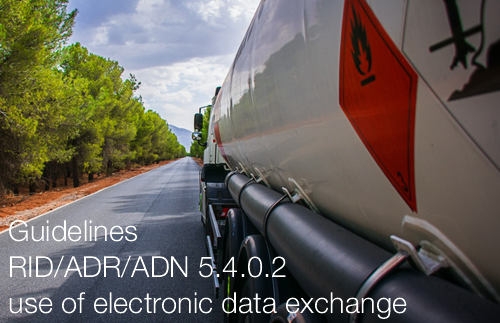
Guidelines for the use of RID/ADR/ADN 5.4.0.2 (use of electronic data exchange)
At its 107th session, the Working Party on the Transport of Dangerous Goods (WP.15) requested that the following guidelines for the use of subsection 5.4.0.2 of RID/ADR/ADN be published in order to facilitate their use on a voluntary and consistent basis.
Guidance application GHS criteria to petroleum substances | 2019
Guidance on the application of GHS criteria to petroleum substances (updated in 2019)
The updated 2019 IPIECA GHS guidance includes a detailed discussion of a “weight of evidence” (WoE) approach and presents a stepwise path to determining the best data to be used for classification decisions. An updated classification flowchart utilizes a three-tiered approach in which substance-specific toxicity data are considered first, followed by read-across data and then data for hazardous constituents.
Given the expanding international market in chemical substances and mixtures, a global system of classification and labelling was proposed at the 1992 Earth Summit by the International Labour Organization (ILO), the Organisation for Economic Co-operation and Development (OECD) and many other governments and stakeholders. In response, the United Nations developed the ‘Globally Harmonised System’ (GHS) which is a single worldwide system for classifying and communicating the hazardous properties of industrial and consumer substances and mixtures.
The oil and gas industry, represented by IPIECA, was the first sector to present guidance on its products to the UN Sub-Committee of Experts on GHS (UNSCEGHS) in 2010. The guidance document, The application of Globally Harmonized System (GHS) criteria to petroleum substances, has now been revised to include new research on the hazards of petroleum-related substances and constituents.
…
IPIECA
International Petroleum Industry Environmental Conservation Association
Download
UN Manual of Tests and Criteria Seventh revised edition Amd 1
UN Manual of Tests and Criteria Seventh revised edition Amd 1
Recommendations on the Transport of Dangerous Goods – Manual of Tests and Criteria
Published: June 2019
The “Manual of Tests and Criteria” contains criteria, test methods and procedures to be used for the classification of dangerous goods according to the provisions of the “United Nations Recommendations on the
Transport of Dangerous Goods, Model Regulations”, as well as of chemicals presenting physical hazards according to the “Globally Harmonized System of Classification and Labelling of Chemicals (GHS)”.
It therefore also supplements national or international regulations which are derived from the Model Regulations or the GHS.
Originally developed by the Economic and Social Council’s Committee of Experts on the Transport of Dangerous Goods, which adopted a first version in 1984, the Manual of Tests and Criteria has been regularly updated and amended. Currently, the updating is done under the auspices of the Committee of Experts on the Transport of Dangerous Goods and on the Globally Harmonized System of Classification and Labelling of
Chemicals, which replaced the original committee in 2001.
At its ninth session (7 December 2018), the Committee adopted a set of amendments to the sixth revised edition of the Manual as amended by Amendment 1. These amendments, include, inter alia:
– A full review of the text of the Manual to facilitate its use in the context of the GHS;
– A new test under test series 8, to determine the sensitiveness of a candidate ammonium nitrate emulsion or suspension or gel, intermediate for blasting explosive, to the effect of intense localised thermal ignition under high confinement (sub-section 18.8);
– New provisions addressing classification of polymerizing substances for transport;
– Stability tests for nitrocellulose mixtures (new Appendix 10); and
– A compilation of classification results on industrial nitrocellulose in accordance with Chapter 2.17 of the GHS which can be used for the classification of industrial nitrocellulose based products (new Appendix 11).
In addition, noting that the work to facilitate the use of the Manual in the context of the GHS had been completed, the Committee considered that the reference to the “Recommendations on the Transport of Dangerous Goods” in the title of the Manual was no longer appropriate, and decided that from now on, the Manual should be entitled “Manual of Tests and Criteria”.
The seventh revised edition takes account of these amendments, which were circulated as document ST/SG/AC.10/46/Add.2.
Instructions in Writing (Tremcards) ADR 2019 | Update 2020
Instructions in Writing (Tremcards) ADR 2019
The official models of Instructions in Writing (Tremcards) ADR 2019
Annex Article tremcards the release date, we will update the models attached to the official release on the UNECE website.
Update 05.01.2020
https://www.certifico.com/merci-pericolose/adr/tremcards-adr
Documentation 61th IATA DGR 2020
Dangerous Goods check list / Documentation 61th IATA DGR 2020
Addendum to the 61st Edition
The IATA Dangerous Goods Regulations (DGR) manual is the global reference for shipping dangerous goods by air and the only standard recognized by airlines. IATA is “THE” industry standard for shipping dangerous goods by air. The IATA DGR is the most complete, up-to-date, and user-friendly reference manual trusted by the industry for over 50 years. Whether you’re a shipper, manufacturer, freight forwarder, ground handler, or airline, the IATA Book will keep you up to date with all the latest regulations, providing all the information you need.
Effective from 1st January 2020
– A global reference for shipping dangerous goods by air, and the only standard recognized by the global Airline industry.
– Everything you need to prepare dangerous goods shipments in compliance with international air transport regulations.
– The industry’s most trustworthy cargo sources to help you classify, pack, mark, label, document shipments of dangerous goods, and ensure they are safe to travel.
The 61st edition of the IATA Dangerous Goods Regulations incorporates all amendments made by the IATA Dangerous Goods Board and includes addenda issued by ICAO to the content of the 2019-2020 edition of the Technical Instructions.
Users of the IATA Dangerous Goods Regulations are asked to note the following amendments and corrections to the 61st Edition, effective from 1 January 2020.
…
Add more
Guidelines DGSA Annual Report EASA
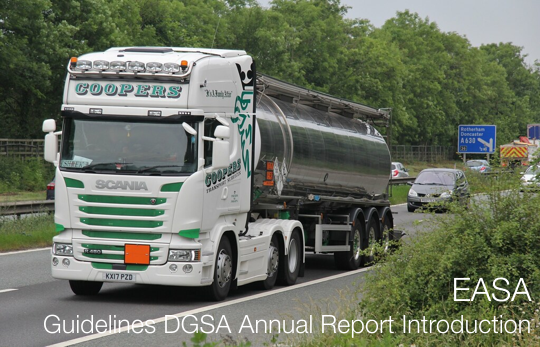
Guidelines DGSA Annual Report EASA
According to sub‐sections 1.8.3.3 of the European Agreements ADR, RID and ADN, the Dangerous Goods Safety Adviser (hereinafter “DGSA”) has the duty to prepare an annual report to the management of his undertaking or to a local public authority, as appropriate, on the undertakings of their activities in the carriage of dangerous goods. ADR, RID and ADN do not specify the content of the annual report; some parties who are contracted to ADR, RID and ADN have specifications in their national legislation. EASA is of the opinion that it may be valuable for the DGSA to have a template for an annual report. In consequence EASA has created a template which respects and harmonises what is requested by the dangerous goods associations in the Czech Republic, France, Germany, Hungary, Ireland, Liechtenstein, the Netherlands, Poland, Spain, Switzerland and the United Kingdom.
This template reflects the DGSA’s duties according to sub‐sections 1.8.3.3 of the ADR, RID and ADN, and it contains what is considered by EASA to be the minimum content of a DGSA’s annual report.
The annual report is addressed to the management of the undertaking; as a consequence the DGSA’s annual report should enable management to determine whether the dangerous goods of their undertaking are being dealt with in a manner that is compliant with ADR, RID and ADN.
An annual report should cover a period of twelve months, although there is no necessity for this period to be identical to a calendar year, i.e. January to December.
The boxes 1 to 9 of the template are self‐explanatory and simple to use.
…
Fonte: EASA European Association of dangerous goods Safety Advisers
La Relazione annuale ADR proposta dall’EASA
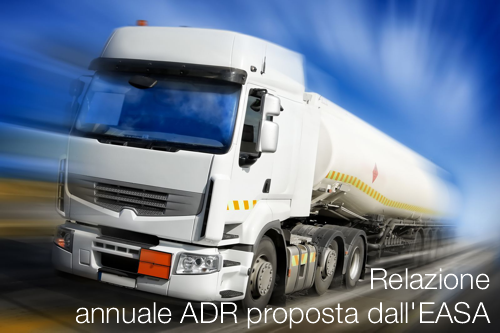
La Relazione annuale ADR proposta dall’EASA
L’EASA European Association of dangerous goods Safety Advisers, ha predisposto nel 2016 un modello di Relazione annuale ADR.
La proposta di modello per la relazione annuale del DGSA è stata inviata all’UNECE nel 2016 (ECE/TRANS/WP.15/AC.1/142, item 41).
In allegato Modello e Documento di ricezione UNECE.
______
Guidelines for Preparing the DGSA Annual Report Introduction According to sub‐sections 1.8.3.3 of the European Agreements ADR, RID and ADN, the Dangerous Goods Safety Adviser (hereinafter “DGSA”) has the duty to prepare an annual report to the management of his undertaking or to a local public authority, as appropriate, on the undertakings of their activities in the carriage of dangerous goods. ADR, RID and ADN do not specify the content of the annual report; some parties who are contracted to ADR, RID and ADN have specifications in their national legislation. EASA is of the opinion that it may be valuable for the DGSA to have a template for an annual report. In consequence EASA has created a template which respects and harmonises what is requested by the dangerous goods associations in the Czech Republic, France, Germany, Hungary, Ireland, Liechtenstein, the Netherlands, Poland, Spain, Switzerland and the United Kingdom.
This template reflects the DGSA’s duties according to sub‐sections 1.8.3.3 of the ADR, RID and ADN, and it contains what is considered by EASA to be the minimum content of a DGSA’s annual report.
The annual report is addressed to the management of the undertaking; as a consequence the DGSA’s annual report should enable management to determine whether the dangerous goods of their undertaking are being dealt with in a manner that is compliant with ADR, RID and ADN.
An annual report should cover a period of twelve months, although there is no necessity for this period to be identical to a calendar year, i.e. January to December.
The boxes 1 to 9 of the template are self‐explanatory and simple to use.
…
Fonte: EASA European Association of dangerous goods Safety Advisers
EN 14564:2019 Tanks for transport of dangerous goods – Terminology
EN 14564:2019 Tanks for transport of dangerous goods – Terminology
This document provides additional terms and definitions to those written in the European Agreement Concerning the International Carriage of Dangerous Goods by Road (ADR) or the Regulations concerning the International Carriage of Dangerous Goods by Rail (RID), appearing as Appendix C to the Convention concerning International Carriage by Rail (COTIF).
This document forms part of series of documents prepared by CEN/TC 296 regarding the transport of dangerous goods. The series supports the proper application of the ADR and RID. This document is applicable to tanks used for the transport of dangerous goods.
This document does not apply to carriage in bulk of dangerous goods. For convenience, Annex A (informative) repeats some horizontal definitions taken from ADR 2017 chapter 1.2, and Annex B (informative) repeats some definitions from ADR 2017 chapter 6.7, specific to portable tanks. NOTE The ADR is updated on a regular basis, therefore Annexes A and B might become out of date. Annexes C, D and E (informative) provide alphabetical trilingual indexes of terms in English, French and German where the key is English, French and German respectively. Annex F (normative) is a schematic diagram of tank openings and closures according to the tank code
UNI EN 14564:2019 Cisterne trasporto di merci pericolose – Terminologia
UNI EN 14564:2019 Cisterne trasporto di merci pericolose – Terminologia
UNI EN 14564:2019 – La norma si applica alle cisterne utilizzate per il trasporto di merci pericolose e fornisce termini e definizioni aggiuntivi a quelli scritti nell’accordo europeo relativo al Trasporto Internazionale di Merci Pericolose su Strada (ADR) o alle regolamentazioni relative al Trasporto Internazionale di Merci Pericolose per Ferrovia (RID).
Data entrata in vigore: 14 novembre 2019
Recepisce: EN 14564:2019
Sostituisce: UNI EN 14564:2013


